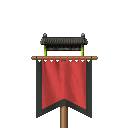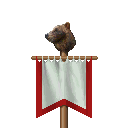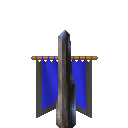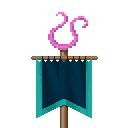Nations of the Early Ages
The Early Ages (EA) is one of three eras that the Player can set their game in.
EA is defined by bronze age technology and a high level of magic in the world. Compared to games set in the Middle Ages (MA) or the Late Ages (LA), EA games have the highest level mages, the most magic sites, the lowest populations, and the highest prevalence of mythical beings.
The world has just exited an era of legends and myth, where overpowered and unrefined forces walked upon the Earth, leaving thirty-four factions that one can choose to helm or conquer.
Arcoscephale is an idealization of Ancient Greece, specifically everything before Macedon, with a focus on the era covered in Archaic legends. There is no iron, for the good folk of the Iliad and the Odyssey used bronze; there are winged bodysuits, however, in-line with the mythical machinations of one Daidalos. There are mystics and philosophers starting to know themselves and study the metaphysical, but the bulk of the nation's magic is present, either mounted by eager young heroes or molded by engineers.



Mekone is a Greek-style city-state, not too dissimilar from Sparta or Athens. Its citizens are the Gigantes, perhaps the world's most-humanlike Giants in terms of appearance, with the patronage of Cyclopean smiths the heavens lost interest in. The Gigantes are ruled by a trinity of mage-kings, mage-administrators, and wizened elders, all of whom show nothing but avarice towards their human "clients" and helots (slaves). This massive mortal population serves as Mekone's army of pawns, while the Gigantes aim their gleaming spears at the "false" gods of mankind.





Pangaea is a nation of Greek half-men, ranging from the crass satyrs to the rowdy centaurs. Most of these beings were considered nymphs (nature spirits) or demigods in Greek mythology, and Pangaeans are certainly persistent, stubbornly refusing to remain disfigured or ill. Only those of a white hide have blessed magic, however, or at least the expectations upon them to become mage-priests. This excludes the Panii, Pangaea's reclusive conductors, who keep the forests thick and its residents wild.







Ermor is a fantasy version of Rome, with anachronisms spanning over a thousand years; the army is of the early Republic, for instance, while the religious situation is from six hundred years later. Bishops possessing the "white magic" of healing perform miracles in its cities, either in or across the street from old temples to the pagan Numina, and equites (knights) make solemn vows over replicas of their deceased Prophet's shroud. Spiritually secure, these same nobles endorse incense-burning augurs, who use C'tissian "black magic" to seek fortune in the land of the living.
Sauromatia is a wild region, based on the accounts that Herodotus and other Greek authors had of the Scythian tribes. The nation has two parts; there is the steppe, which is dominated by matriarchal tribes who have pushed the rest to the peripheries, and there are the swamps closer to the shore which have Androphags ("man-eaters"). The steppe folk are not known for their mages, who are either horse-less men or Amazons who've clung to their old ways, but the Androphags have followed serpent-riding sorcerers for centuries.



The Fomorians are based off the old, wicked gods of Irish mythology; they have been psychopomps, pirates, and monsters, according to their various portrayals. Such a shift has not fared well for them, as their monstrousness has increased with successive generations and become maladaptive, and those without defects are considered blessed. The throughline with Fomorians is that they are all destructive; they cling to the world with brute strength, and with ruinous magic, and the elf-like tribes beneath their yoke know better than to revolt.








Tir na n'Og is the otherworldly paradise of Irish mythology, lived in by the Tuatha Dé Danann ("Danu's tribe"). They descend from the Nemedians, who in-turn descend from the Partholonians, but no one knows exactly where they came from; they merely sailed in from the seemingly landless north, claiming an island that other relatives of Nemed stumbled upon and calling it blessed. Beyond their island core, the Tuatha are rarely seen, but every noble and prominent warrior in the land has at least one Tuatha ancestor. The common folk are far less impressive, though still greater than most men.









Marverni is a fantasy version of pre-Roman Gaul, and all of its Celts. It is presumably an exonym, for the Marverni are but a single tribe in the confederation; the others are the martial Ambibates, the tenacious Carnutes, the horse-bound Eponi, and the stargazing Sequani. The nation is united by culture and faith, with the Druids and other priests as its decision-makers. The Druids in-turn follow the stars, gleaming intent and advice from their movement above the Earth, and will even sacrifice virgins on their whim.




Ulm is a tribal nation, roughly Germanic in its names and places, and Conan-esque otherwise. The Ulmish live in less-than-ideal conditions, in villages nestled in forests or dotting mountainsides, and are rather hardy as a result. Mercy is alien to them; fathers are expected to abandon their sons for a year once they come of age, and sons without fathers are made to drive the Wheel of Pain. The Ulmish have invented the greatsword, presumably a product of each warrior-smith's individual effort to solve the Enigma of Steel.





Pyrène is the homeland of the Bekrydes; in real-life, the Bekrydes lived in modern Turkey, but Greek myth places their original homeland in the Pyrenees mountains. Dominions explains the discrepancy by making them cavemen, who were lost in the under-earth for generations. Having only seen the Sun again relatively recently, the Bekrydes of Pyrène are far behind other humans, but the giants immortalized in Basque mythology have found them endearing and are helping them catch up.





Deep underground reside the Pale Ones, one-eyed amphibians of a deep and isolated history. Here they have existed since before the Pantokrator's reign, unknown to both humanity and the Sun, scarcely appearing in the records of other peoples. The Pale Ones fill their niche in the deep caverns, known as Agartha, settling grievances and forging alliances with the other sapient beings of the depths; they only stop growing in death, however, and greater prosperity has seen them push up against boundaries set long ago.




Abysia is a nation built around a volcano, the Smouldercone. From its magma chamber, the King of Magma spawned the lava-born race, a people composed of more fire than earth. Pushed along by an unquenchable rage and an insatiable urge to act, the lava-born have carved out a realm of warlords and ziggurats, which other races withdraw from if they can. Despite its appearance, Abysia is not evil at heart; however, there are some who see the flames of their race cooling, and who are taking drastic measures to ensure a sort of survival down the line.








Hinnom (the place name for "Gehinnom") is a land seeped in Talmudic lore, with added apocrypha for good measure. It is not too different from pre-Joshua Canaan, at least if God told everyone the Great Flood would happen and then never started it. Never washed away, the teachings of the renegade angels remain, and their Nephil (giant) descendants have proliferated wildly. The cups of Hinnom's lords are filled with blood. The Sons of the Fallen will either sweep over the world, be wiped out, or burn out Hinnom in a generation.



The Three Deserts hide the Ubaran Plateau, which is the hiding place for Iram, City of a Thousand Pillars, which in-turn hides the City of Brass. Each layer between the Brass and the outside world was made by the Jinnun (Arabic genies), either intentionally or unintentionally, through the magic that composes them. Tales of wealth have lured humans across the first four hurdles nonetheless, but none can enter or exit the City of Brass, not until some power within makes a compelling claim for the heavenly throne.




Ur is a region of mud and rivers, populated with wild men modeled after the Mesopotamian Enkidu. The Enkidus (as they are known) have only just built a civilization, with the teachings of seven Apkallu (sages) and the things slaves from Hinnom brought with them. Many Enkidu are not on board with it. Much of the nation's strength is still in its wild tribes, and in the shamans who disapprove of the "settled" lifestyle; on the other hand, the God of Ur has risen from the City of Eridu, and it is in their best interest to build more cities that more priests may preach in.





Kailasa is a Vedic nation of primates and their teachers. The realm is still stewarded by the Yakshas, nature spirits whose superiors were convinced to leave with the Pantokrator's ascent. Beneath them are their Yavana guardsmen, who in-turn sit above the relatively-common Guhyakas. All three groups look identical, but the same cannot be said for the primates; the Markatas are small and fidgety, the Vanara are lanky and careful, the Bandar are gorillas in all respects but intellect, and the Yakshas' favorites all have white fur.









Lanka is a kingdom of Rakshasas, violent and destructive counterparts to the Yakshas. They are descendants of the Danavas and Daityas, beings who forsook the Celestial order for power on Earth, and thus they are instilled with gluttony. Most Rakshasas are hand-to-mouth, not even bothering with gold because they cannot eat it, and they find any sort of sacrifice abhorrent. The Rakshasa kings have trouble mobilizing their kin, but their sisters have taken note of the Yaksha's servants, and have drawn some of the Bandar realms to their side.






As the title implies, T'ien Ch'i is a fantasy version of China's Spring & Autumn period, when the Zhou Dynasty established the Mandate of Heaven and then ceded their authority to regional warlords. The idea of a "Celestial Realm" (T'ien Ch'i) exists, for there are elders in the capital who have communed with Heavenly powers, but unity is largely a mirage. The "Realm" is far from quiet, with local nobles leading armies themselves, old men sending "Heavenly Demons" upon foes, and even the dead having speaking roles.









Yomi is named after the Japanese underworld; neither a place where mortals may prosper, nor one where misdeeds are punished. It is home to bandits, disgraced priests, unscrupulous sorcerers, and now six races of mountain demons known as the Oni. These uncouth beings enter Yomi from gateways to the Underworld, and will gladly discard their bodies to avoid being sent back; then, once they realize they can't feel much as ghosts, they'll reform.










Caelum is a mountain realm with Iranian influences, mainly mythological ones. Its locals form three clans, each of which trace their lineage back to a faction from ancient times. The white-winged Airya have changed the least, loyally following the Yazatas ("divinities") since their spurning by the Pantokrator; the other two clans had to be drawn back into the fold, with the gray-winged clan seeking renewed glory and the third clan seeking absolution. Only the Yazatas may rule, as the three clans would come to blows otherwise.







Mictlan is a kingdom of kingdoms in a rainforest realm, named after the underworld of Aztec mythology. For Mictlan's gods, it is not enough that some pray, nor is it sufficient to sacrifice part of one's harvest. If the altars are dry, bloodthirsty beings will withhold the Rains, the Moon, and even the Sun from Mictlan's people, to say nothing of their high god's presence. There is no iron, no horse, and no time to waste, though the kings may decide where the virgins come from.









Xibalba is a confederation of city-states in the under-earth, though some apply the name to the caves themselves. As in K'iche myth, its old gods who held mastery over death have been befuddled. (Dominions attributes this to the Pantokrator.) Without gods and their supernatural servants, Xibalba's servile inhabitants didn't know what to do with themselves, and most awaited the return of either the Sun or the blood-drinking bat-demons. For better or for worse, the demons arrived first.







C'tis is an ancient kingdom of lizardfolk, best-mirroring Ancient Egypt, but also resembling other Bronze Age states. Reigning over one of the oldest states still around, the herbivorous elite have had centuries to refine their tactics, their liturgy, and their school of magic. Signs of complacency are showing, from the lack of scouts and archers to the selective breeding of slaves stronger than themselves, but no man can recall C'tis's last existential crisis. In the eyes of the Sauromancers, C'tis shall weather whatever comes next.






Machaka is a sacral kingdom, inspired by various myths just south of the Sahara. Every Machakan has an animal who watches over their clan, whom they aspire to reflect in some manner; the only exceptions are the Great Men of Mababwe, also known as the Colossi, though they play along with their Lion Clan spouses. It is the Colossi, and not "Lion" himself, who made the Lion Clan ascendant over the rest. The other clan animals dwell on the periphery of power, but some stand shoulders above the rest, notably obnoxious "Hyena" and conniving "Spider".







Berytos is a fantasy version of Phoenician civilization, with an equivalent of Carthage as its most-important city. The Berytians have always been maritime traders, even before the short period when their namesake city was their only settlement. Refugees of a now-shattered land with now-shattered gods, they filled the religious void with the first true power they found; unfortunately, what they found were the lords of Hinnom, who have corrupted the society while barely lifting a finger. Berytos is also the refuge of a small group of Colossi, whose queens have co-opted the priesthood and been corrupted in the process.








Vanheim is a chilly land of moors and longhouses, belonging to a race named after one of the Nordic pantheons. These superhuman beings, the Vanir, are a belligerent lot who habitually raid human settlements. Having been in conflict for most of their history, much like their divine ancestors and the gods who taught them magic, the Ascension Wars are nothing new for the Vanir; if anything, they're an opportunity to collect more sacrifices for the fallen. Their land also contains Dwarves, a few inhabitants who have devoted themselves to a single craft (and combat).





Further from Vanheim than most other races, the Vanir of Helheim have split from their distant siblings, stemming from mistrust over their powers. Helheim contains an entrance to the Underworld, where a god of the Vanir made several expeditions in-and-out of death itself, and the lords and ladies of Helheim are his former retainers. Most-famed among them are the Valkyries, flying women who take warriors from the battlefield to the Underworld, both literally and figuratively.






Rus is a moiety based on Baltic and Finnic mythology, or at least the understanding of the regions by medieval Slavs. There are the settled Rusians, who keep to indoor hearths or caves and set roots, and there are the nomadic tribes of hunter-gatherers; ancient marriage customs keep the populations together, despite the shifting inclinations of both. Interspersed within Rus are the Chudes, a race just beyond human limitations, who possess powers resembling what they take or consume.
One of the Nine Realms of Norse mythology, Niefelheim was at its most prominent in an era long before the Early Ages, when the land was actively carved by giants known as the Rimtursar. Two spinoff races, the blue Niefel Giants and the white Jotunar, remember the Rimtursar well; men of the latter yearn for their reawakening, with some dedicated to making it happen, while the men of the former would rather not be dwarfed again. Jotun sorceresses have begun playing both races off of each other, to gain pawns that they may throw against their personal grudges.




Muspelheim is a lone volcano in a landscape of snow, so to speak. Nordic legends say that the end of days will come from here, as the Muspel Giants mobilize their sons and conquer their rivals, melting the ice of creation and flooding the world completely. The Jotunar of Muspelheim don't seem to mind the prophecy, respecting the Muspel Jarls for their strength and their storied heritage, though perhaps some trickery from the "Muspeldottirs" is to blame. The gap between Muspel Giants and their soot-colored descendants is like that between Niefel Giants and the Jotunar, and the Jarls may see this as their nation's last chance to act.




The name "Pelagia" is Greek, but its residents wouldn't be out of place in a Northern European bestiary, if such a catalog focused on the sea. All Tritons flutter-kick through life with their twin tails, though their clans or tribes may have different customs for other things. Mermen have but a single tail, but they trade it in for legs whenever they leave the waves. Pelagia prides itself in having the best of the Tritons underneath its banner and views itself as the richest nation on Earth, and it considered itself the only underwater civilization until recently.



Life under the Sun corresponds with that beneath the waves, or so it is said. Oceania is the undersea equivalent of Pangaea, with sirens in place of harpies, Capricorns instead of Panii, and "Ichty" versions of the rest. Each has a few traits to differentiate themselves; the sirens are far from obnoxious, for example, while the Capricorns are capricious. Then there's the shapeshifting; like how Pan made himself half-fish while trying to swim from Typhon, the Oceanians change their limbs to run on-shore.



Therodos was once the kingdom of the Telkhines, sea daimones (semi-divine beings) who brought iron to mankind. The Telkhines began to see themselves as gods, reckoning that they could act without consequence; as a result of their hubris, the Pantokrator sent them to Tartarus. Whatever the Telkhines actually did cursed Therodos, and her core lands were sunk beneath the waves, with all of their mortal inhabitants. It all happened too fast for the Therodians to comprehend; and now that the other daimones have stirred their ghosts, they act as though they can rebound.






Unlike the Atlantean faction above, this Atlantis is an emerging nation spawned from the bottoms of the depths. Most of its inhabitants left long before the civilization coalesced, forming a diaspora of frogmen the other sea races understand; now many have been called back, hearing of the splendor of the Basalt City. Those who never left are horrific, their features having never adapted to the Sun, and their sapience is suspect. And then there are the City's Kings, who let a dark crystal fill their heads with mysteries…




R'lyeh is a city-state of Aboleths, beings fortunately not trademarked by Wizards of the Coast. The Aboleths are the men in a species of polyps, the spawnlings meant to swim off and find other polyps to procreate with, grown to mammoth proportions through surviving far beyond anyone's expectations. With age has come wisdom, which in this case has come with an enormous brain, the sort strong enough to bend lesser beings to its will. As aberrant minds of animalistic origin, the Aboleths have morals and goals beyond anyone's understanding, though even they have unresolved questions.



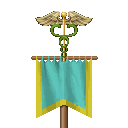
 2
2 2
2

 1
1

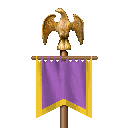








 3
3 1
1













